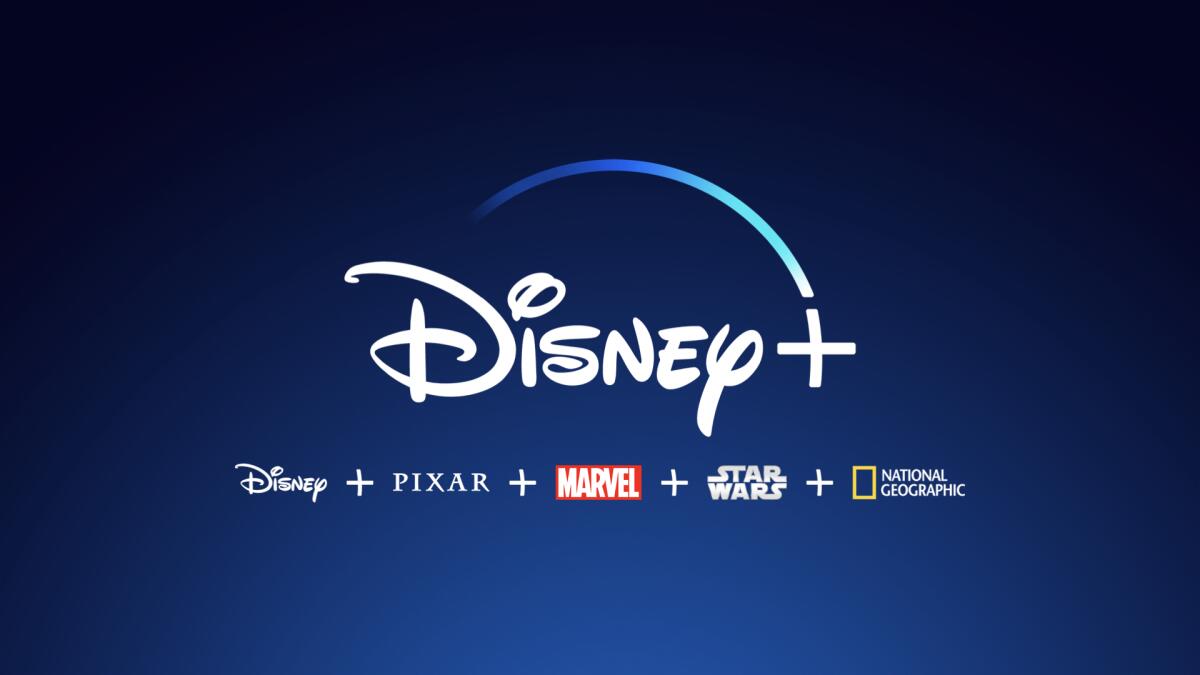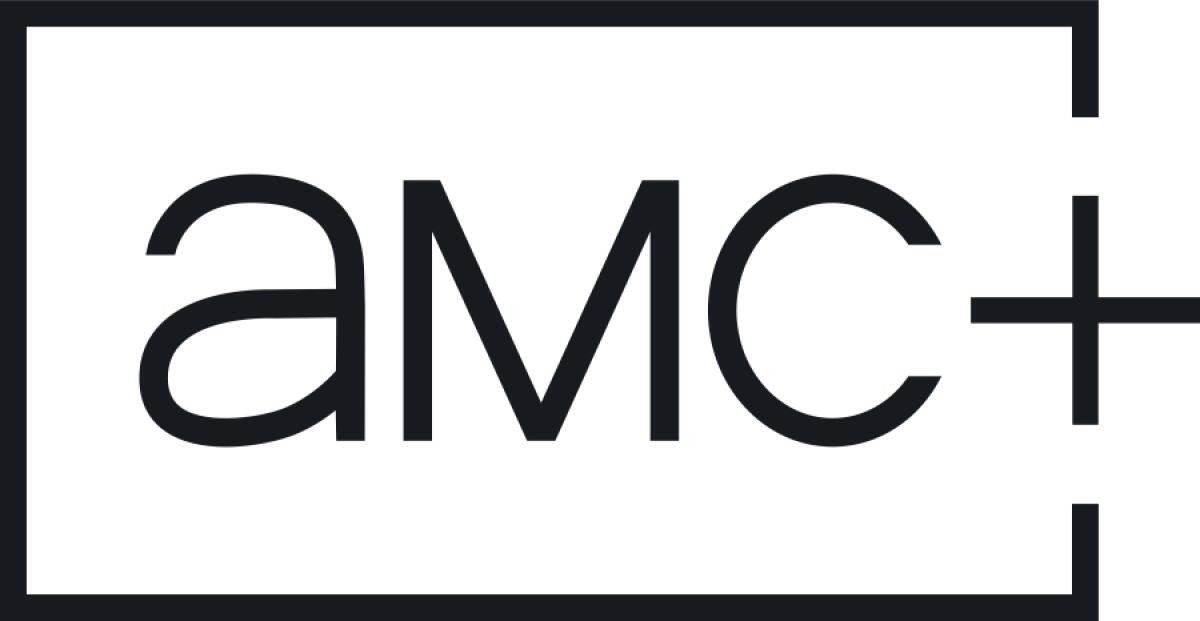Disney+. Apple TV+. Paramount+. How the plus sign won the streaming wars

- Share via
Last summer, mobile wireless company Mint Mobile briefly joined the streaming wars.
The company ran a commercial introducing Mint Mobile+, offering users a single movie, “Foolproof,” a 2003 comedy starring Ryan Reynolds.
Reynolds, who owns a majority stake in Mint Mobile, said on Twitter that the service was being discontinued just a few minutes after its launch announcement. “Our crack data team has already determined Mint Mobile + should probably be shut down by the weekend. We’ll go back to focusing on premium wireless…”
The ad was a gag. But parodying the addition of a plus sign to a brand name reflects how it has become the go-to symbol for media conglomerates when they christen their emerging video-on-demand streaming businesses.
Discovery Communications is the latest to enter the marketplace with Discovery+, putting the cable programmer’s wide array of unscripted series in a $4.99 a month package starting in January. CBS All Access — the streaming home for ViacomCBS-owned programs and films — will be relaunched as Paramount+ next year, affixing the symbol to the name of the company’s 108-year-old movie studio.
They join the brigade of plus-named services that include Disney+, ESPN+, Apple TV+, BET+ and AMC+.
Why the fixation with plus?
Steve Kazanjian, president and chief executive of Promax, the trade association for marketing companies serving the entertainment industries, said the repeated use of the arithmetic symbol has made it an efficient tool to create awareness of the new services.
The home of cable networks HGTV, Animal Planet and ID is launching a direct-to-consumer service starting at $4.99 a month.
“There is a stake in the ground that’s around ‘plus’ right now,” he said. “It’s in the consumer lexicon. It owns a bit of emotional equity in your brain already, which is really powerful.”
Discovery found that was the case when it conducted surveys and focus groups with consumers on possible names for its service. The company considered dozens of original monikers — testing Latin words and new-fangled creations that came from combined words — a route that Jeffrey Katzenberg’s short-lived streaming service took when it melded “quick bites” into Quibi.
The Quibi name failed to reach critical mass even after receiving exposure to 100 million TV viewers during the Super Bowl, demonstrating the challenge a new entity faces in breaking through to consumers.
But the rapid growth of Disney+ — already at 86 million subscribers just one year after its launch — paved the way for Discovery to adapt a plus sign as well.
“Our research confirmed that the plus sign has become synonymous with streaming video on demand services,” said David Leavy, chief operating officer for Discovery.
Adding the plus sign to an established name is a way to tell consumers that the service carries content that goes beyond what the consumer already associates with the brand. For Disney, that includes projects from Pixar and Marvel, the Star Wars universe, National Geographic programming and the library of 21st Century Fox programs it owns such as “The Simpsons.”
“While we’re using Disney as the main brand, we had to let people know that it’s a lot more than just Disney,” said Joe Earley, executive vice president for marketing at Disney+. “It’s why we had an ad with Bart Simpson defacing our logo with ‘+ The Simpsons.’”
Success breeds imitation.
Discovery has a similar rationale for Discovery+. Leavy said the company wanted to tap into consumers’ affection for its flagship channel Discovery, which has a global reputation as a provider of adventure, exploration and nature programming. Adding the plus helps convey the wide range of unscripted fare from the company’s other networks — from true crime to the guilty-pleasure reality series “90-Day Fiancé.”

The plus sign also needs no translation, making it an asset to a company that wants to distribute its service overseas. Discovery+ is already operating in the United Kingdom and India.
“It does the heavy lifting,” Leavy said.
Ed Carroll, chief operating officer for AMC Networks, said his company came to the same conclusion deciding on AMC+ for its streaming service, which carries programming from its family of cable channels that include IFC, BBC America and Sundance.
“There’s a time to be creative and reinvent the wheel, and there’s a time to be very clear and so we went for what we thought was succinct and simple,” Carroll said.
The plus sign is the latest transformation of a symbol or letter for marketing purposes as digital technology keeps introducing new products and services, said Julie Doughty, director of naming and verbal identity at the brand consulting and design firm Landor & Fitch.

“There was a trend of naming everything with a lower cased ‘i’ after Apple introduced the iPhone and iPad,” Doughty said. “There were dot-coms with brand names. You had e-readers and eBay. I feel this is a new wave.”
The birth of the plus sign goes back to the late 15th century when mathematicians moved away from presenting their work in a rhetorical way. The symbol arrived more than a thousand years after the minus sign, according to Joseph Mazur, professor emeritus of mathematics at Marlboro College in Marlboro, VT.
“It first appeared in a book by Johannes Widmann, a German mathematician, who was writing a kind of textbook on mercantile arithmetic, talking about surpluses, deductions and things like that,” Mazur said. “He wanted a symbol for plus and he decided ‘why don’t I take the minus sign and just cross it.’”
In modern times, the plus sign has come to evoke getting more, joining together or something that follows — all concepts that make consumers feel good.
“When you’re talking about a company branding a logo in some way, you want to package something that’s going to hit your subconscious in some way that will be positive,” Mazur said. “It’s something so familiar that you just don’t have to think about it.”
With other services using the plus sign, Earley said Disney tried to give its symbol a distinctive look, slightly curving it off on one side. In its promotional spots, there is a clicking sound when the shooting star arcs around the famous company logo and connects with the plus sign.
“We wanted to lean into the plus in the beginning and try to own it as much as we could,” Earley said.
Not every media company is on the plus sign bandwagon. The name of NBCUniversal’s service Peacock is a homage to the NBC broadcast network’s legendary logo introduced in 1956 to promote color TV programs.
And WarnerMedia chose to expand on the name of HBO, its most prestigious television brand name, by calling its streaming service HBO Max.
While the HBO Max name is not winning raves in the media industry, Kazanjian said it’s still too early to determine its impact on the streaming service’s success. Kazanjian believes max is “loose synonym of plus.”
Carroll said his company discussed using “max’ for its service before deciding on AMC+.
“It’s one character instead of three,” Carroll said. “Also central to the name is the AMC brand. We thought it was the right balance.”
Doughty said the simplicity of the plus sign is appealing to companies and consumers because it defines a service that is relatively new to consumers, some of whom are still adapting to the technology. But she believes there is value in creating an original name.
“Longer term, a name like Peacock is really interesting because they can make that mean whatever they want it to mean over time, whereas the plus sign that is not own-able,” Doughty said. “I would rather have something the company controls. Think about Hulu. It didn’t mean anything to the consumer at the beginning.”
Then there is Netflix, which began in 1997 as a business that offered DVD rentals through the mail. It did not need a name change to transform itself into a company that led the streaming video revolution. But who knows what would have happened if its founders stuck with its original name — Kibble.
More to Read
Inside the business of entertainment
The Wide Shot brings you news, analysis and insights on everything from streaming wars to production — and what it all means for the future.
You may occasionally receive promotional content from the Los Angeles Times.











